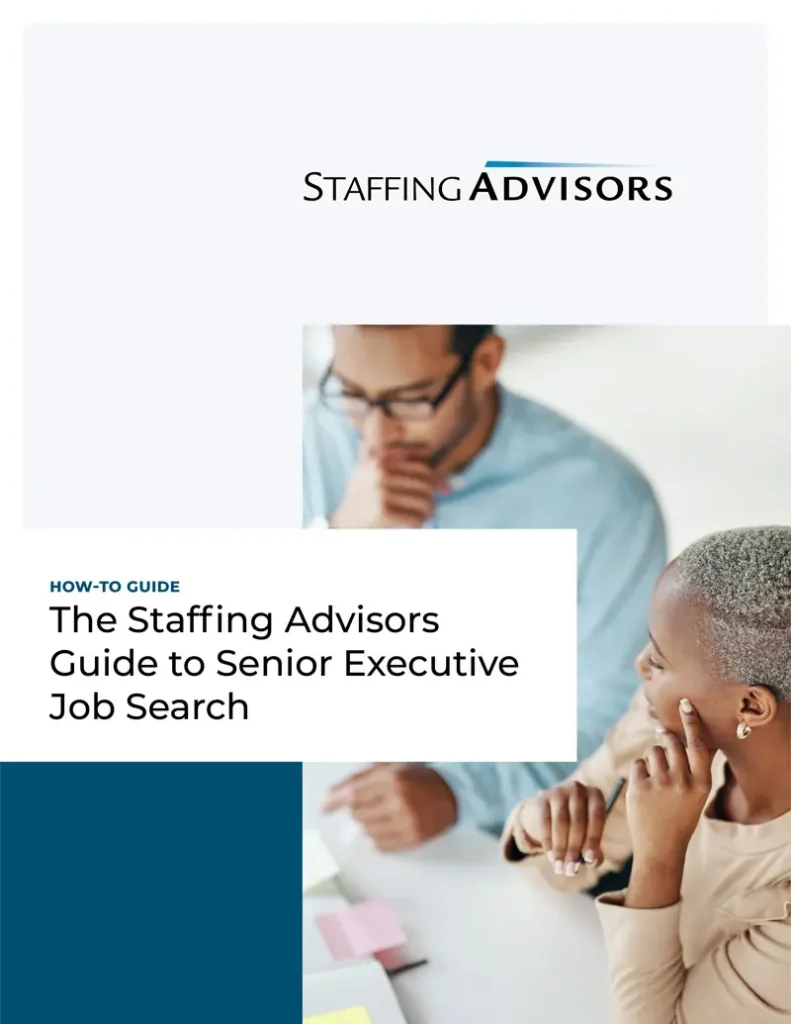“Should I give a company permission to review my resume with AI?” It’s a question we’re hearing more and more from candidates. Staffing Advisors doesn’t use artificial intelligence (AI) or automated employment decision tools (AEDT) to evaluate candidates—and we have no plans to start. But as mainstream vendors, like ADP, HireVue, and Workday, add AI and AEDT features to their platforms, many recruiters and employers do. So, should you check the “consent” box before hitting send?
We can’t make that decision for you, but we can help you make an informed choice. Here’s a breakdown of what these tools are and what you should consider before giving or withholding consent.
What Are Automated Employment Decision Tools?
The term “AEDT” was defined in New York City’s Local Law 144 (passed in 2021, enforced starting 2023). The law mandates that employers using automated tools for hiring or promotion decisions conduct annual bias audits and inform candidates of their use.
An AEDT is software that uses artificial intelligence or automated data analysis to review information like your resume or interview responses and generate a score or recommendation to help employers decide who moves forward in the process.
Are All Automated Recruiting Tools AEDTs?
No. Recruiters use many automated tools to schedule interviews, collect and organize information in an applicant tracking system (ATS), or search for candidates using keywords. These tools are not considered AEDTs because they don’t score or make decisions about candidates.
A tool could be considered an AEDT if it:
- Uses algorithms or models to assign scores, rankings, or suitability levels.
- Is used to filter out or advance candidates based on those scores.
Examples:
- Resume screening tools that use predictive analytics to recommend top candidates.
- Pre-employment tests that use algorithms to score applicants.
Will Every Employer Using AI or AEDTs Ask for My Consent?
Not necessarily. There are a limited number of states and cities that have current or pending legislation around using AI or AEDTs in hiring, including California, Colorado, Illinois, Maryland, New York City, Utah, and Texas. Unless they are operating in an area with laws requiring notice, employers don’t have to disclose the use of AI or automated tools. If you’re curious, this is a great breakdown of the evolving regulatory conversation.
Are Associations and Nonprofits Using AI or AEDT’s in Recruiting?
For most associations and smaller nonprofits, no. Our firm’s president, Bob Corlett, recently explored this in a piece for the American Society of Association Executives, AI in Hiring: Why Human Resources is Still Human. The takeaway is this: while HR teams may use automation and AI to handle repetitive tasks like scheduling or summarizing notes, they don’t trust AI to handle the nuances of hiring decisions. At least, not yet.
What Are the Risks If I Consent to AI Screening?
First, a quick reminder that unless you are in an area with active regulation, you may not be notified of AI use or asked for consent. If you’re rejected based on AI screening, you may not know or be able to challenge it.
The risks of giving consent include:
- Algorithmic Bias and Discrimination. The U.S. Equal Employment Opportunity Commission (EEOC) has warned that automated tools can perpetuate discrimination. In 2023, the EEOC settled a case against an employer for using a hiring algorithm that screened out applicants based on age.
- Lack of Transparency. Many AI tools operate as “black boxes,” offering no explanation for how decisions are made. That’s why the NYC law requires disclosure, acknowledging the lack of transparency as a concern.
- Data Privacy. Employers have to be careful only to choose vendors and tools that don’t violate local privacy laws, but there is no universal standard. Especially in states without strong privacy laws, your consent could allow vendors to collect, analyze, and store personal data without providing information about how it is used or shared.
What Happens If I Don’t Consent to AI Screening?
The risk of not giving consent? We don’t have hard data to back this up, but it’s reasonable to assume that your materials could be deprioritized or skipped entirely if an employer’s system is built to rely heavily on AI tools.
What Can I Do as a Job Applicant?
If you are searching for a job in 2025, there’s a chance that your materials will be reviewed by AI in some way, even if you don’t formally agree. Here are steps you can take to protect and position yourself effectively:
- Protect your data. Exclude unnecessary personal information from your resume and cover letter. Employers do not need your full address or phone number at the application stage. Consider using a separate email address for your job search.
- Double check the platform before submitting an application. Always apply through the employer’s or recruiting firm’s official website. Avoid unfamiliar third-party sites that might scrape or misuse your data.
- Update your resume and LinkedIn profile with relevant keywords. Even if a company doesn’t use AI to evaluate applicants, they may use AI-assisted tools to “source” or find candidates. And most recruiters use advanced Boolean search techniques that rely on keywords to identify matches in applicant databases or online profiles. That means you can increase your visibility by aligning your materials closely with the jobs and industries you’re targeting. Read How To Take Your Resume From Good to Great and What Recruiters Want to See in Your LinkedIn Profile.
- Use AI to check whether your materials align with a job description. For tips and prompts, read Work Your Job Search Smarter With AI and Using AI in Your Job Search? Here’s How To Do It Ethically.
Staying Informed Is Your Best Strategy
So, should you consent to AI resume review in your job search? There’s no one right answer. What you can do is understand what you’re agreeing to, consider the tradeoffs, and take steps to protect your data and strengthen your application.
Every piece of information you gather during the hiring process helps you assess whether an employer is a good fit for you. If a company uses AEDTs without transparency—or without offering you a choice—you may decide that’s not the kind of workplace you want. If an employer clearly communicates how and why they use these tools, and asks for your consent, that may signal something positive about their workplace culture.
Unfortunately, candidates are often kept in the dark about much of the hiring process and the rise of AI and automation only adds to that uncertainty. Our goal is to shed light wherever we can to help you navigate your job search with confidence.
A Comprehensive Guide to Your Job Search
Learn how to tell your career story from crafting your resume to acing the interview with the Staffing Advisors Guide to Senior Executive Job Search. (No signup or email required.)

